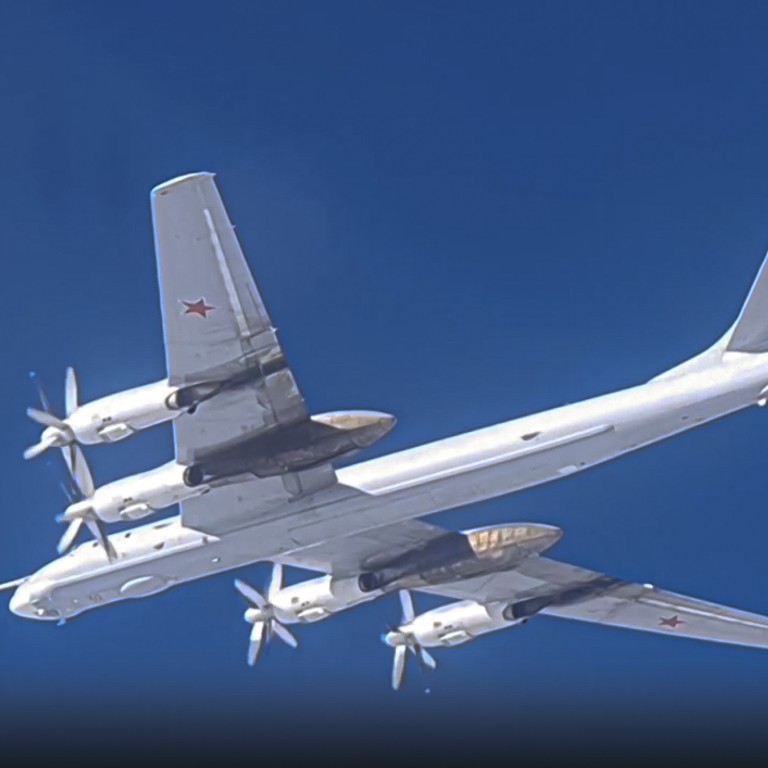
South Korea, Japan scramble jets in response to Chinese, Russian warplanes – Moscow says airspace not violated in joint patrols
- Both countries’ militaries reported two Chinese H-6 bombers nearing their airspace on Wednesday and said they scrambled fighter jets in response
- ‘Russian missile carriers and Chinese bombers carried out patrols over the waters of the Japanese and East China Seas’, Russia’s defence ministry said
Russian and Chinese strategic warplanes, including Tupolev-95 long-range “Bear” bombers, conducted joint patrols over the Sea of Japan and East China Sea, the Russian defence ministry said on Wednesday.
Russia said that “at certain stages of the route, strategic missile carriers were accompanied by fighters of foreign states.”
“An air group consisting of Tu-95MC strategic missile carriers of the Russian Aerospace Forces and strategic bombers XIAN H-6K of the PLA Air Force carried out air patrols over the waters of the Japanese and East China Seas,” the ministry said.
It said Russian and Chinese aircraft “acted strictly in accordance with the provisions of international law” and that no foreign airspace was violated.
It was the first time that Russia and Chinese military aircraft landed in each other’s airfields as part of a joint air patrol, the ministry said.
The Tupolev Tu-95, known by Nato as “Bear”, along with the Tu-160, is the backbone of Russia’s long-range air attack nuclear forces. It was designed to drop nuclear bombs on the United States in the Cold War.

Seoul’s Joint Chiefs of Staff said two Chinese H-6 bombers repeatedly entered South Korea’s air defence zone off the country’s southern and northeast coasts starting at around 5.50am.
They re-entered the zone hours later from the Sea of Japan, known in South Korea as the East Sea, joined by six Russian warplanes, including TU-95 bombers and SU-35 fighter jets, according to the Joint Chiefs of Staff, which said in a statement that the aircraft did not violate South Korean airspace.
Meanwhile, Japan’s Defence Ministry said two Chinese bombers and two suspected Russian planes flew above the Sea of Japan on Wednesday, with the country’s Air Self-Defence Force scrambling fighter jets in response.
Russia and China hold joint naval patrols in the Pacific, Moscow says
The two Chinese H-6 bombers flew through the Tsushima Strait in southwestern Japan from the East China Sea to the Sea of Japan in the morning before heading northwards, the ministry said.
The two suspected Russian aircraft reversed their direction from southwards and headed for the North above nearby waters, it added.
The ministry said it was collecting further information and was trying to find out the intention behind the flights.
Reporting by Reuters, Kyodo
